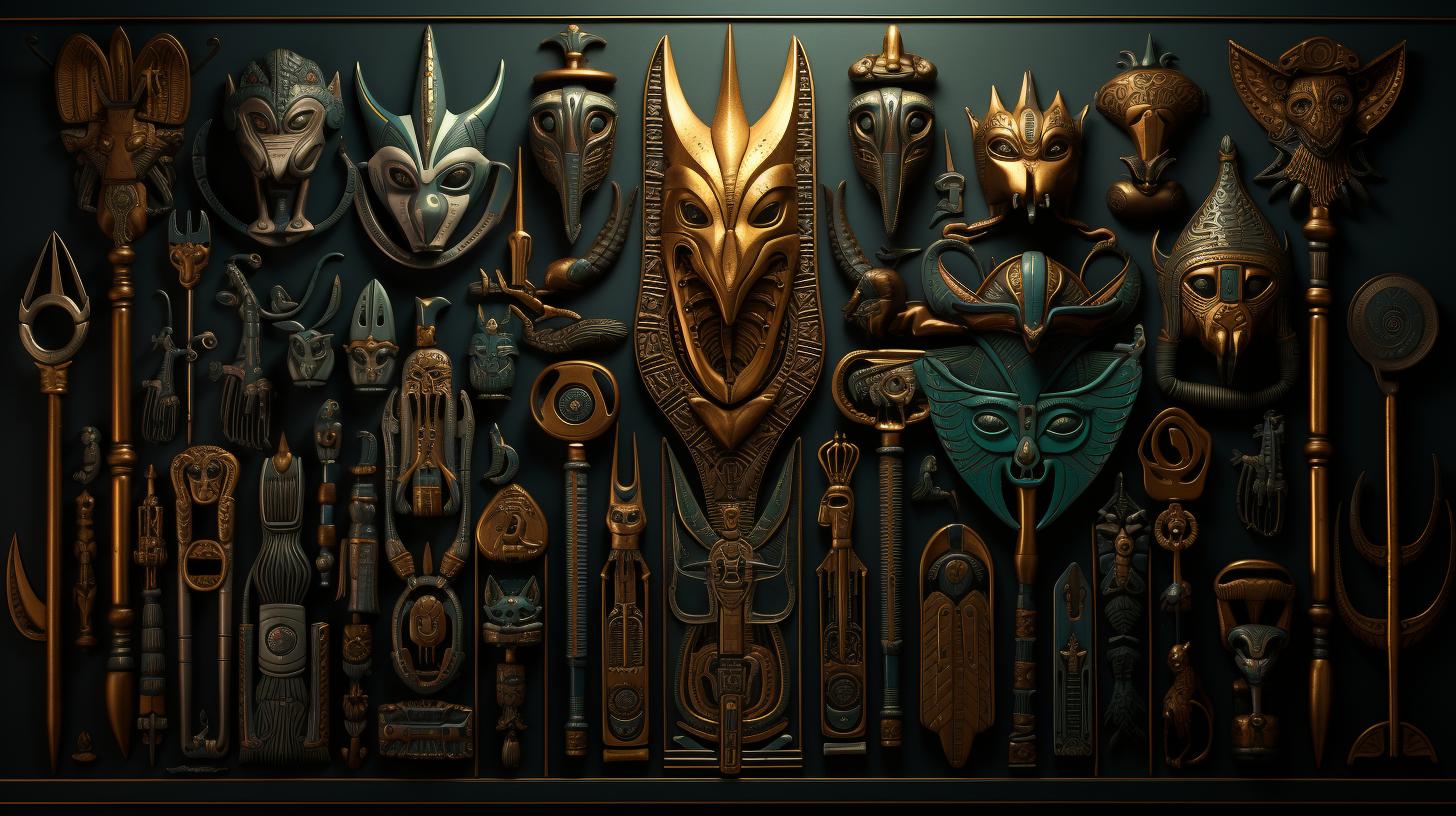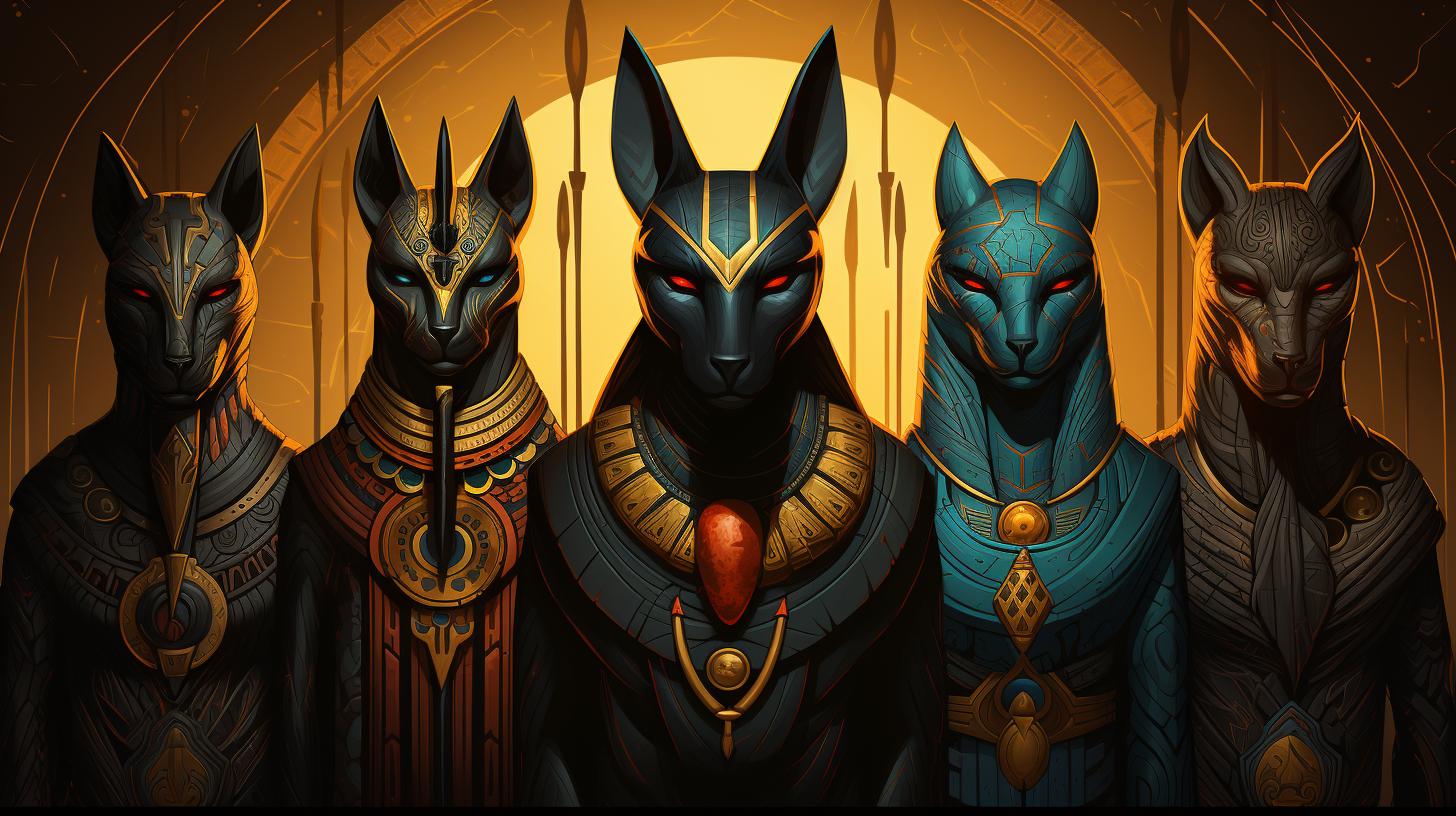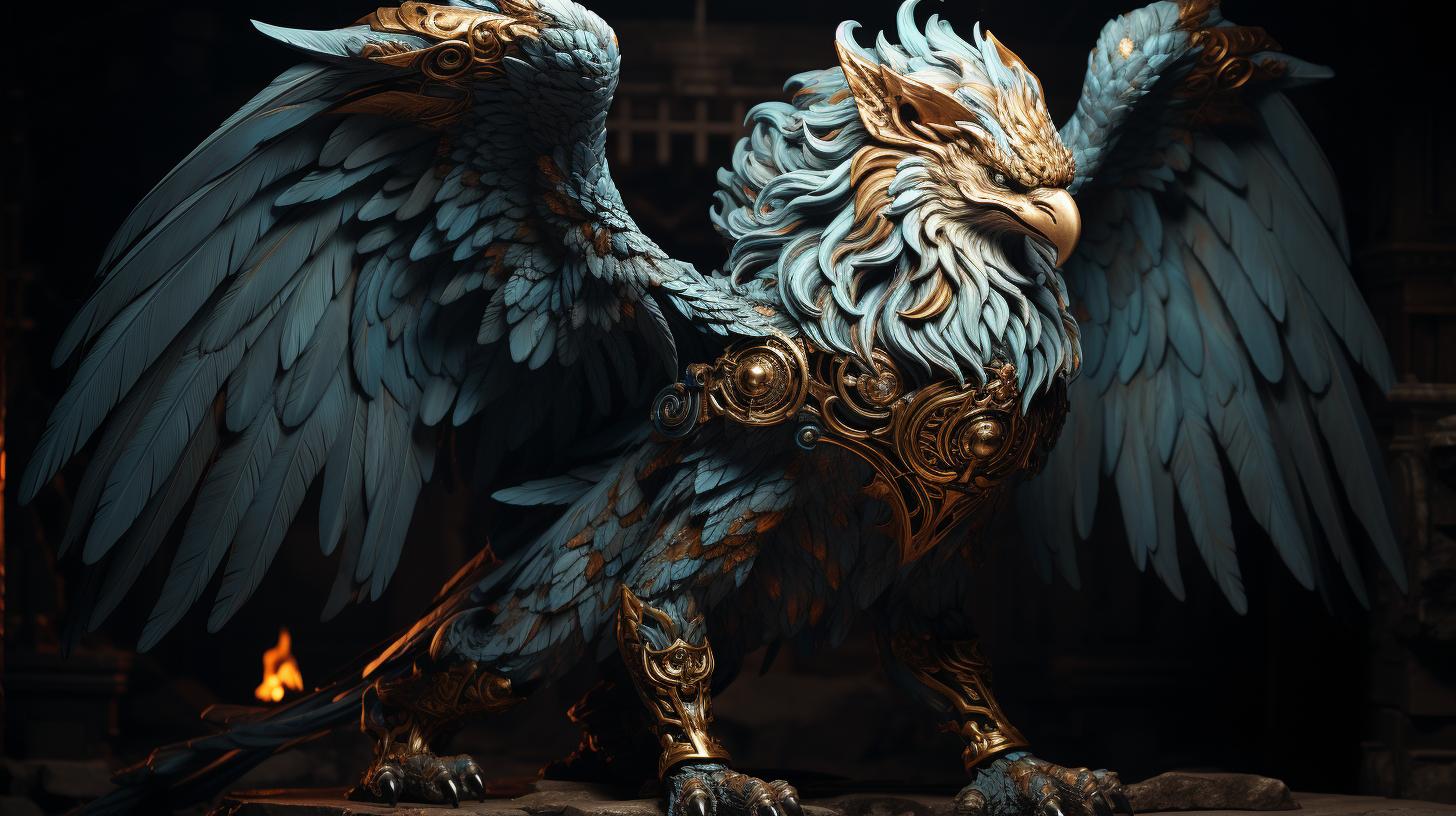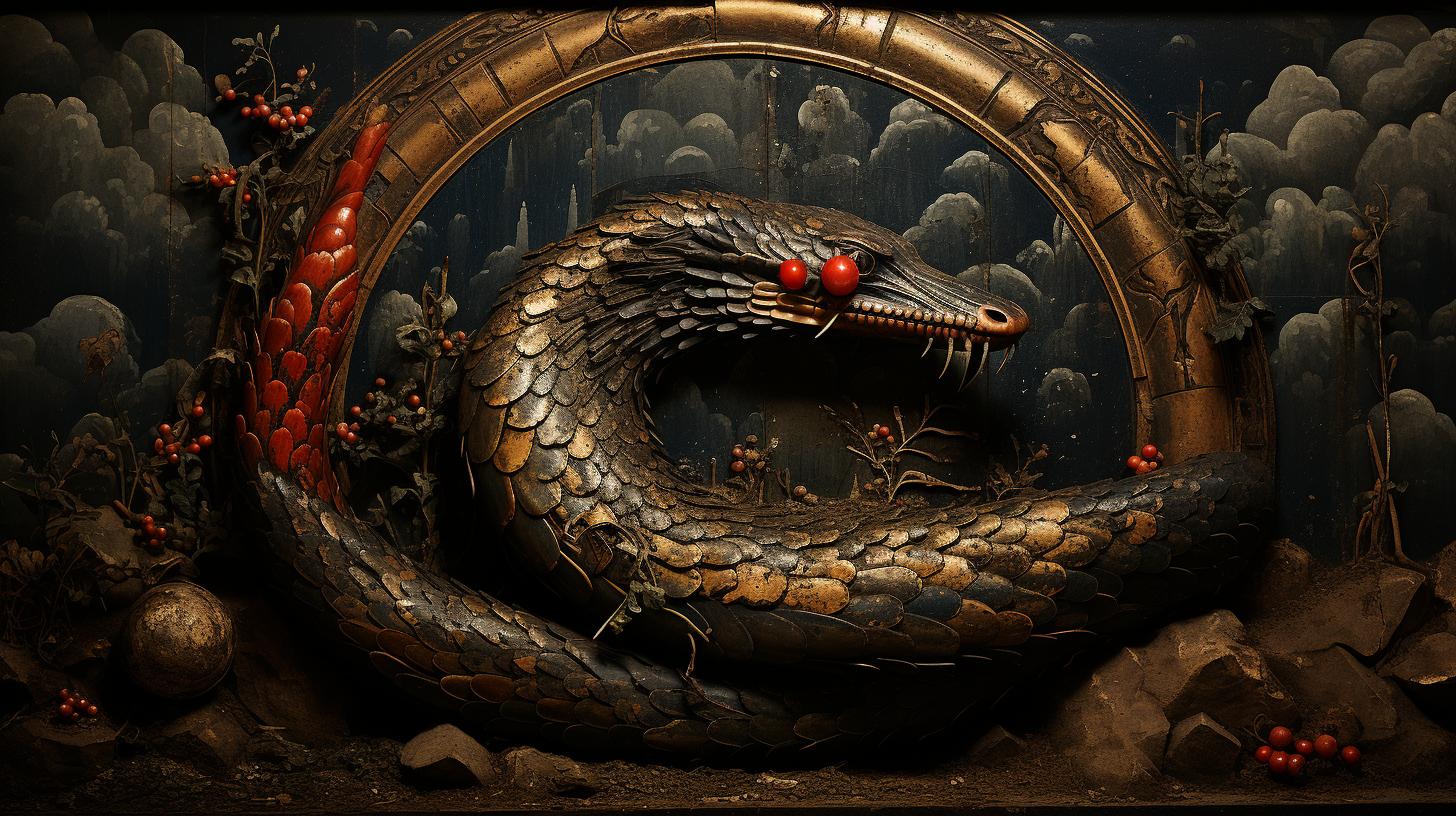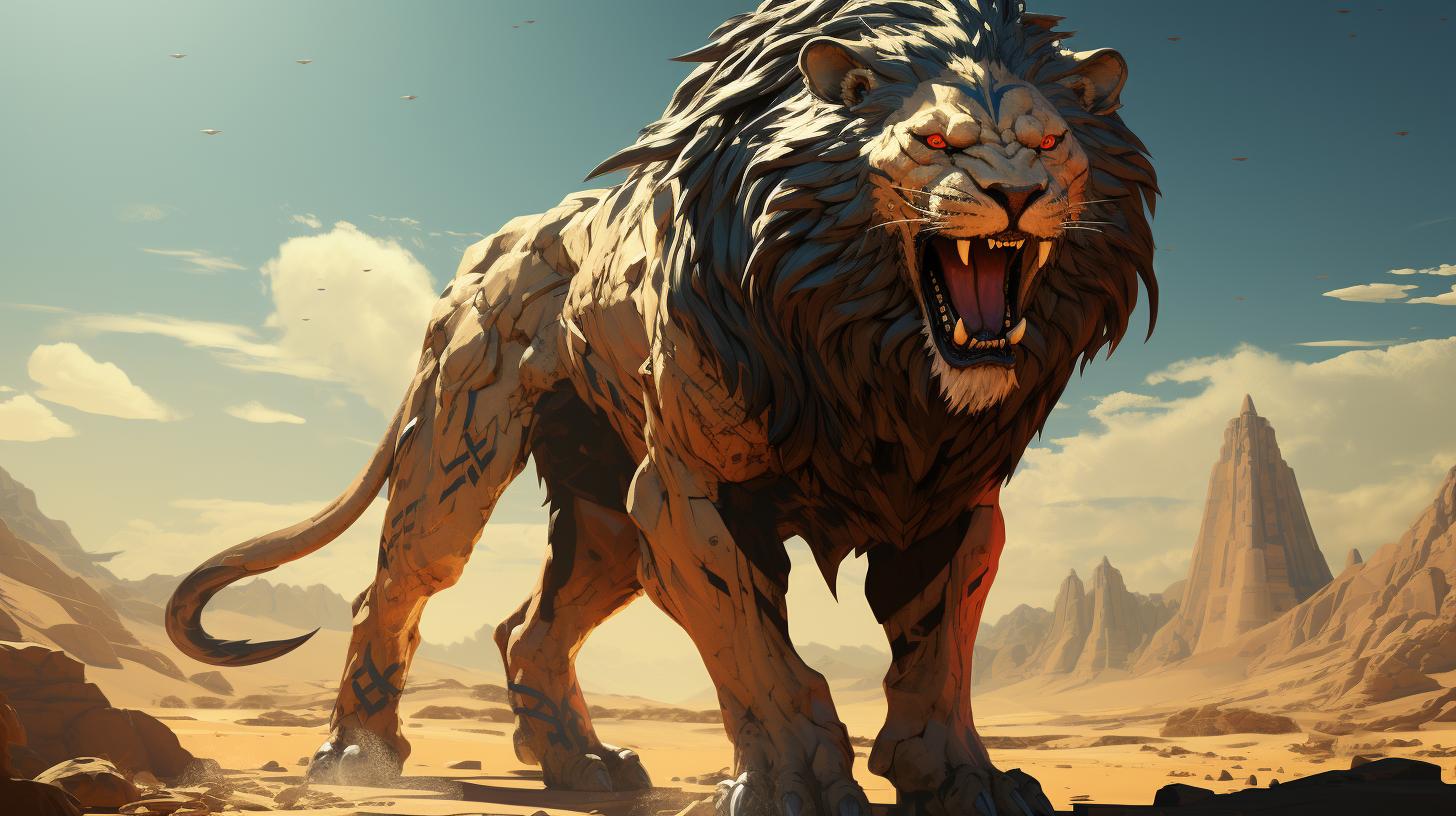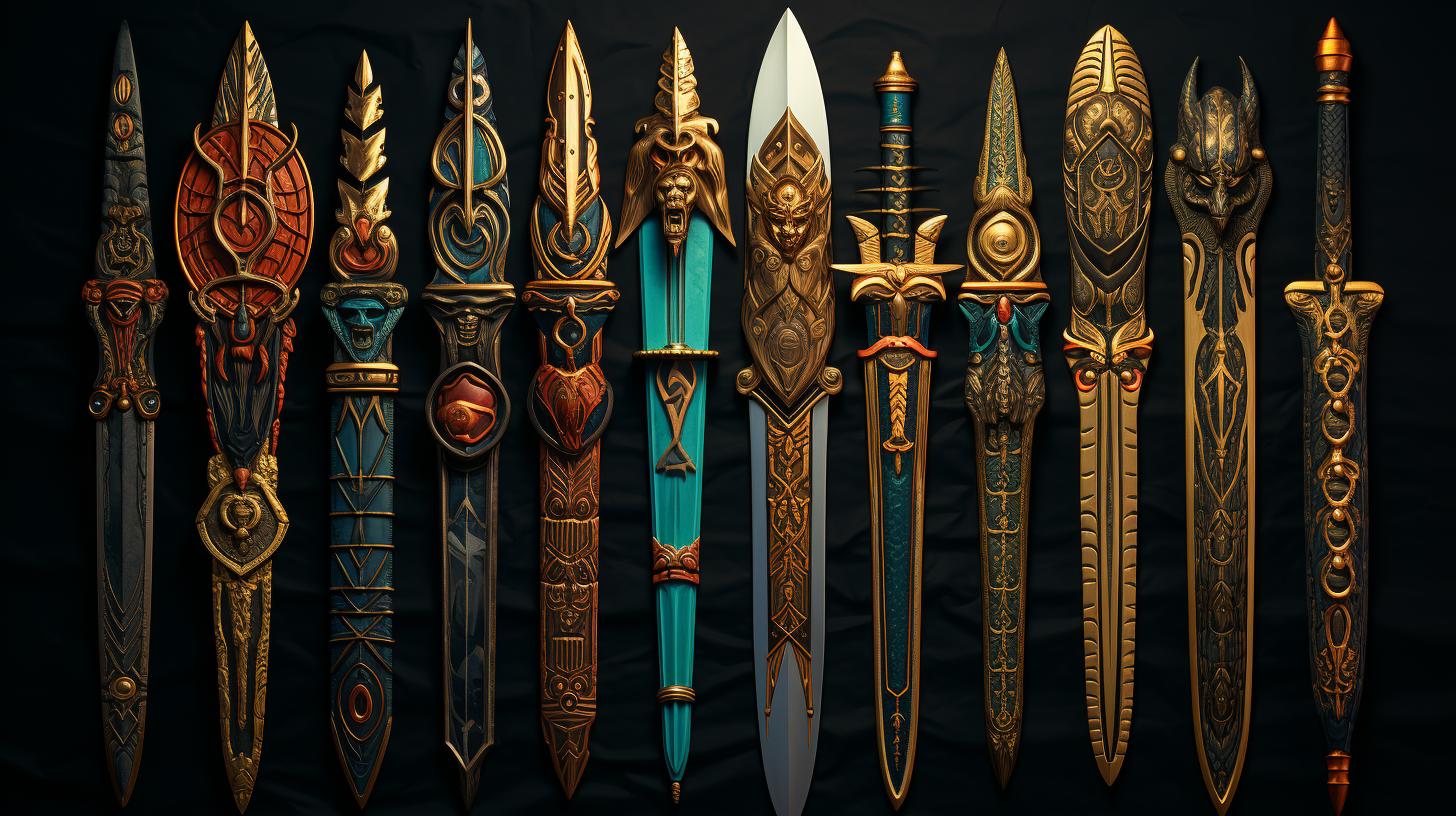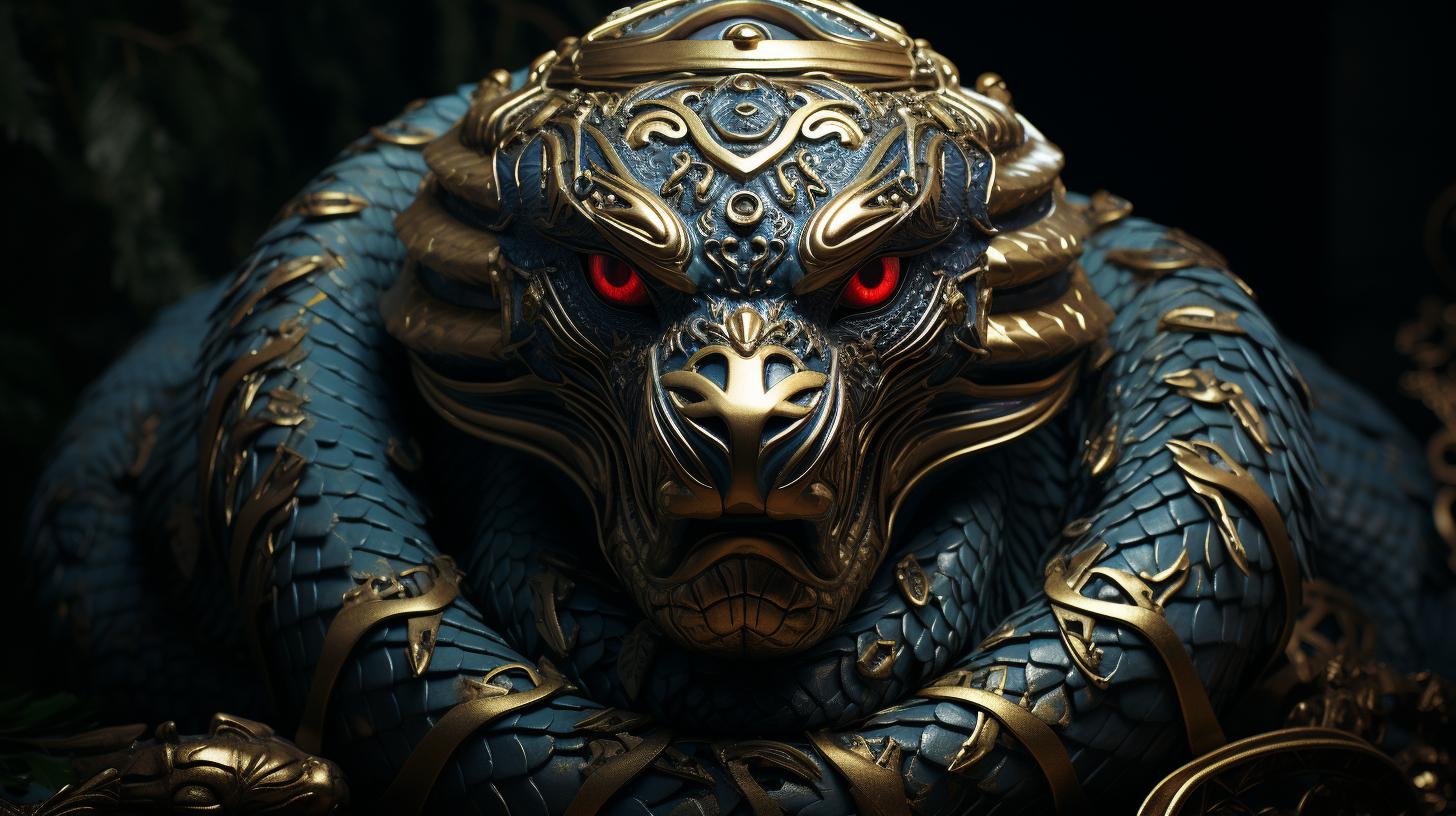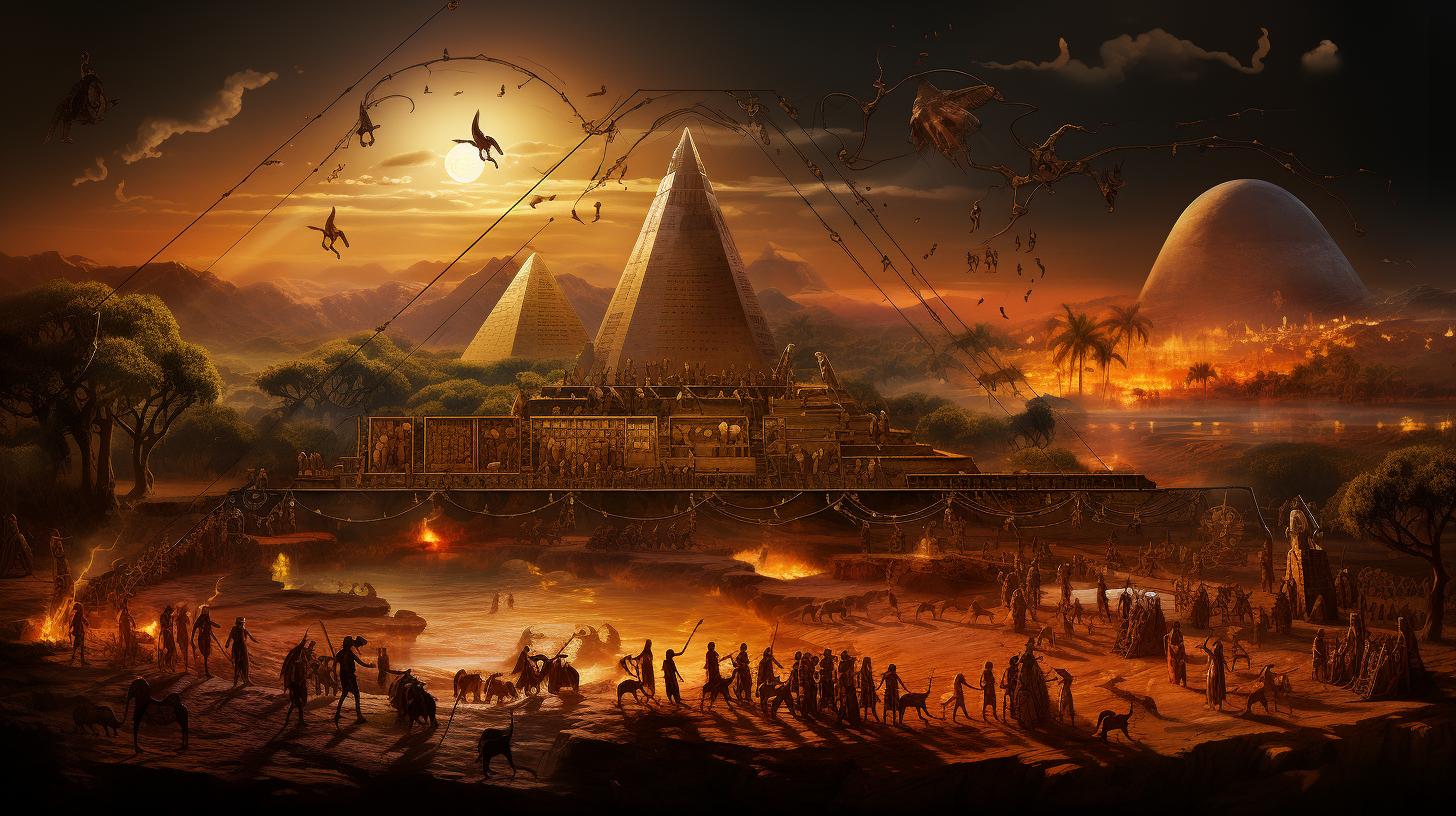Are Egyptian Gods Immortal: Unraveling the Eternal Mysteries of Ancient Egypt
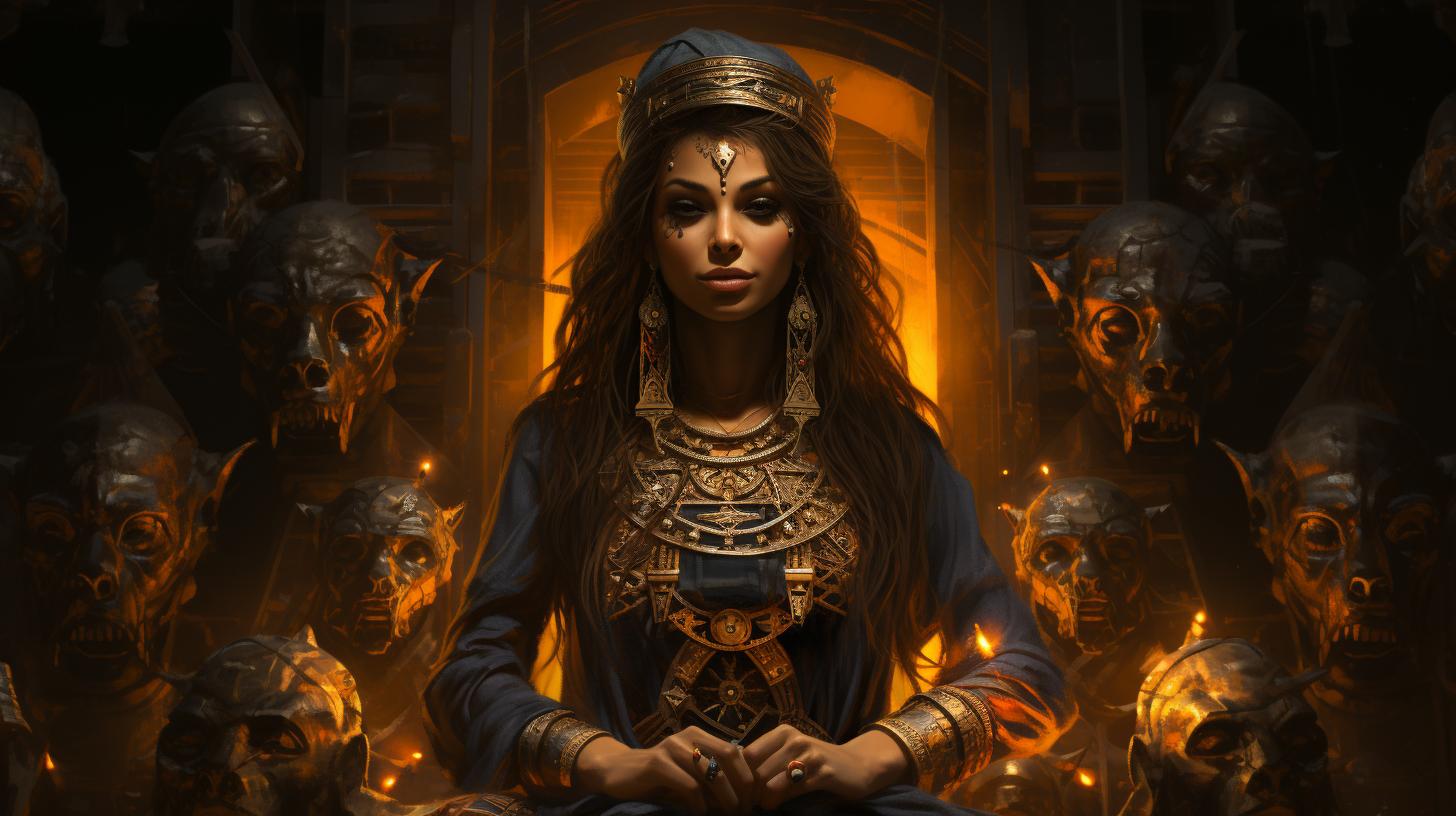
Egyptian Gods, a topic of intrigue and wonder, have long been associated with the concept of immortality. Ancient Egyptians believed in their gods’ eternal existence, maintained through rituals and offerings to uphold divine order.
These complex deities, depicted in various forms, held a significant place in Egyptian society, interacting with humans through temples and sanctuaries. While some texts suggest gods had beginnings and endings, like the resurrection of Osiris, others imply their timeless and transcendent qualities.
Egyptian mythology also explores the notion of a cyclical ending, where select elements endure as gods transform. Notably, these beliefs in divine immortality intertwine with notions of an afterlife.
Exploring the Immortality of Egyptian Gods
In ancient Egypt, the concept of divine immortality held great significance.
The beliefs surrounding the eternal nature of Egyptian gods shaped their culture and religious practices.
Ancient Egyptian Beliefs on Divine Immortality
Ancient Egyptians firmly believed in the immortality of their gods. They viewed the gods as eternal entities with powers beyond the earthly realm. While some texts mention gods having beginnings and endings, the notion of revival was also prevalent.
The resurrection of Osiris by his wife, Isis, exemplifies this belief in the ability of gods to overcome death and regain their divine status.
Significance of Rituals and Offerings in Sustaining Divine Order
Rituals and offerings played a crucial role in maintaining the divine order, known as maat.
Egyptians worshipped and appeased their gods through acts of devotion, ensuring the harmony between the mortal and divine realms. These practices encompassed a wide range of activities, from prayer and offerings to elaborate ceremonies performed in temples.
The Role of Temples and the Pharaoh as Representatives of the Gods
Temples held great importance in Egyptian society as the physical abodes of the gods. They served as sacred spaces for religious ceremonies, rituals, and interactions between humans and gods. The pharaoh, considered the highest authority, acted as the representative of the gods on Earth and played a pivotal role in maintaining the connection between the mortal world and the divine realm.
Egyptian Gods: Complex and Diverse Representations
The ancient Egyptian gods were depicted in a multitude of forms, showcasing the complexity of their divine nature. The art of ancient Egypt vividly portrayed these various facets, capturing the essence of their divine presence.
The Multifaceted Depictions of Gods in Egyptian Art
Egyptian art beautifully captured the multifaceted nature of the gods, portraying them in different forms such as animals, humans, objects, and combinations of these elements. Each representation symbolized different aspects of the gods’ power and influence.
For example, Ra, the sun god, was often depicted as a falcon or as a man with a sun disk on his head, signifying his role as the ruler of the sky and the bringer of light.
These artistic depictions not only showcased the gods’ physical appearance but also conveyed their symbolic significance and attributes. They served as a visual language through which the Egyptians communicated their beliefs and reverence for the divine.
The Shifting Hierarchy of Egyptian Deities: From Ra to Amun to Isis
The position of gods in the Egyptian pantheon was not static; it underwent changes over time. Different deities held the highest position in the divine hierarchy at different periods, reflecting the evolution of religious beliefs and cultural influences.
Ra, the sun god, held great prominence in the early Egyptian civilization, symbolizing the power of the sun and its life-giving properties. As the religious landscape evolved, Amun rose to prominence, often merged with Ra to become Amun-Ra, the supreme god associated with creation and the king of all gods.
Another significant deity was Isis, the goddess of magic and motherhood. She gained prominence during the New Kingdom and continued to be revered as a powerful goddess with protective qualities.
Her influence extended beyond Egypt’s borders, as her worship spread throughout the Mediterranean region.
The Persistence of Polytheistic Beliefs in Ancient Egypt
A distinguishing feature of Egyptian religious beliefs was the persistence of polytheism, even as different gods rose and fell in prominence. The Egyptians maintained their original polytheistic worldview, attributing unique roles and powers to each deity.
While some scholars propose the existence of a singular divine power behind all the gods, the Egyptians remained devoted to their polytheistic beliefs. This belief system allowed for a diverse and intricate tapestry of gods, each with their own distinct characteristics and spheres of influence.
These beliefs were deeply ingrained in Egyptian society, shaping daily rituals, social structures, and the understanding of the world.
- The gods were depicted in diverse forms, including animals, humans, and objects.
- Ra, Amun, and Isis held paramount positions in the divine hierarchy at different times.
- Polytheism remained a steadfast belief system throughout ancient Egypt.
These elements form key aspects of the mesmerizing world of Egyptian gods and their complex representations.
Interaction between Humans and the Divine
The connection between humans and the Egyptian gods played a vital role in the society of ancient Egypt. The Egyptians believed in the omnipresence of their gods, who could influence natural events and impact human lives.
This profound belief led to the establishment of temples and sanctuaries as sacred spaces for people to engage with the divine.
The Omnipresence of Egyptian Gods and Their Influence on Natural Events
The gods in Egyptian mythology were seen as present throughout the world, capable of exerting their power over nature and controlling natural events.
The Egyptians believed that their gods could cause floods, droughts, and other natural phenomena. They interacted with the gods through offerings, rituals, and prayers, seeking their guidance and protection.
Temples and Sanctuaries as Spaces for Prayer, Rituals, and Divine Guidance
Temples served as the primary venues for religious ceremonies and rituals in ancient Egypt.
These grand structures, managed by the pharaoh, functioned as places of worship and as centers where the gods could be approached. Inside the temples, people engaged in prayer, performed rituals, and sought divine guidance, often performed by priests who acted as intermediaries between the human and divine realms.
Offering Rituals and Propitiation of the Gods
- Offerings of food, drink, and other valuable items were made to the gods as a sign of respect and devotion.
- These rituals were believed to maintain the cosmic order and ensure the benevolence of the gods towards humanity.
- Participants in these rituals sought favors, protection, and blessings from the deities.
Divine Guidance and Oracles
- In temples, individuals sought guidance from the gods through oracles, who acted as mediums for divine communication.
- Oracles delivered messages and prophecies from the gods, providing insights and guidance for individuals and the community.
- This interaction with the divine through oracles played a significant role in decision-making and problem-solving for individuals and even rulers.
The Essential Role of Human-Deity Relationships in Egyptian Society
The relationships between humans and the gods were of paramount importance in Egyptian society.
These interactions were seen as a two-way process, where humans had duties and responsibilities towards the gods, and the gods bestowed blessings and protection in return. This relationship reinforced the religious and social fabric of ancient Egyptian civilization.
Religious Duties and Devotion
- Regular participation in religious rituals and observance of religious duties were considered vital to maintaining a proper connection with the gods.
- Devotional acts, such as personal prayers, offering sacrifices, and prostration before the gods, demonstrated one’s faith and commitment.
Social and Moral Expectations
- The belief in divine judgment influenced personal and social conduct, as individuals sought to align their actions with the divine laws of maat, the cosmic balance and order.
- Respect for the gods and adherence to moral principles were seen as crucial for individual and societal well-being.
- Religious festivals and gatherings provided opportunities for communal celebrations, reinforcing social cohesion and shared values.
These interactions between humans and the divine in ancient Egypt fostered a sense of spirituality and guided the daily lives of the Egyptians, enshrining the gods as integral figures in their culture.
The Immortality Debate: Birth, Death, and Resurrection of Gods
The eternal nature of Egyptian gods has long been a subject of debate and speculation. The ancient Egyptians held diverse beliefs surrounding the birth, death, and resurrection of their deities, shaping their understanding of divine immortality.
Exploring this fascinating topic sheds light on the complex nature of Egyptian cosmology and their perception of the gods’ existence.
Gods with Beginnings and Endings: The Revival of Deities like Osiris
One perspective suggests that while Egyptian gods had beginnings and endings, they also possessed the remarkable ability to be revived.
Osiris, a prominent deity, symbolizes this concept. Mythology portrays how Osiris was slain by his brother Set, only to be resurrected by his devoted wife, Isis. This compelling story illustrates the cyclical nature of divine life and death, offering a glimpse into the Egyptians’ belief in the revival of their gods.
Beyond Mortality: Gods Existing Outside Time and Transcending the Earthly Realm
Alternatively, Egyptian mythology also highlights the notion that gods exist beyond conventional mortal lifespans. They are depicted as timeless beings, dwelling outside the constraints of time and space, transcending the earthly realm.
This perspective suggests an immortality that surpasses traditional notions of birth and death, emphasizing the gods’ eternal nature and divine essence.
The immortality debate surrounding Egyptian gods provides a captivating glimpse into the intricacies of ancient Egyptian belief systems.
It reveals a nuanced understanding of divine existence, incorporating both cyclical narratives of death and rebirth and the transcendence of mortal limitations. These multifaceted perspectives continue to captivate scholars and enthusiasts alike, shedding light on the complex tapestry of Egyptian religious thought and the eternal nature of their gods.
Egyptian Mythology: Endings and Transformations
In the realm of Egyptian mythology, the concepts of endings and transformations hold significant importance. This section delves into the beliefs surrounding the potential conclusion of the world and the fate of the gods, the elements that preserve the world, and the transformation of deities.
Additionally, it explores the enduring presence of Egyptian gods within Greek and Roman texts.
The Concept of a World’s End and the Fate of the Gods
Within Egyptian mythology, there existed a notion of the eventual end of the world as it was known. Some believed that at this culmination, only the elements that originally gave birth to the world would endure.
Others envisioned a transformation where gods would take the form of serpents. These beliefs provided a framework for exploring the cyclical nature of existence and the potential fate of the gods themselves.
Elements Preserving the World and the Transformation of Deities
- The Sun: Ra, the sun god, played a crucial role in sustaining life and maintaining universal order. His daily journey across the sky represented renewal and ensured the continuation of the world.
- The Nile: The life-giving Nile River held immense significance in Egyptian mythology.
Its annual flooding and fertile banks symbolized regeneration and the cyclical nature of existence.
- Balance and Maat: Maat, the concept of divine order, acted as a guiding principle in Egyptian mythology.
Maintaining balance between opposing forces and upholding maat ensured the preservation and harmony of the world.
- Osiris and the Afterlife: The story of Osiris, who was killed by his brother Set but resurrected by Isis, offered hope for an afterlife in which the deceased could attain eternal existence.
This belief played a crucial role in the transformation of deities and the continuity of life beyond death.
Legacy of Egyptian Gods in Greek and Roman Texts
The influence of Egyptian mythology extended beyond the borders of ancient Egypt itself. Greek and Roman societies encountered and embraced these beliefs, incorporating Egyptian gods into their own pantheons and narratives.
The names and stories of Egyptian gods, such as Osiris and Isis, persisted through the surviving texts of Greek and Roman civilizations, preserving their legacy for future generations.
Immortality and the Afterlife
Immortality and the afterlife were paramount beliefs in ancient Egypt, influencing their funerary practices and spiritual traditions.
Funerary Practices: From Burial to Mummification
Funeral rituals played a crucial role in ensuring a successful transition to the afterlife. The Egyptians practiced various methods of preservation, ranging from simple burials to elaborate mummification processes. The latter involved carefully removing organs, treating the body with natron salts, and wrapping it in layers of linen bandages.
The belief was that the preserved body would be needed in the afterlife, where the soul would reunite with it.
Beliefs in an Enriched Afterlife for Commoners and Enhanced Existence for Kings
A common belief among the Egyptians was that life continued after death, where individuals would enter the realm of the gods.
Commoners, through proper funeral rites and the guidance of Osiris, were believed to enjoy a pleasant afterlife. They were envisioned to partake in agricultural activities, feasting, and the companionship of loved ones.
In contrast, the kings, viewed as divine beings themselves, were believed to ascend to a higher status, becoming one with the gods and ruling over eternity.
The Role of Osiris: Lord of the Underworld and Judge of the Dead
Central to the concept of immortality and the afterlife was the figure of Osiris. As the husband of Isis and brother of Seth, Osiris was a key deity associated with the judgments of the dead and the afterlife.
He served as the Lord of the Underworld, ensuring a fair reckoning and guiding souls through the perilous journey of the afterlife. It was believed that by embodying the virtues and rituals associated with Osiris, individuals could secure a favorable judgment and achieve eternal existence.
In conclusion, the ancient Egyptians held a staunch belief in immortality and the afterlife. Their funerary practices, ranging from simple burials to elaborate mummification, aimed to preserve the body and ensure a comfortable journey in the afterlife.
Commoners and kings were believed to have distinct experiences, with commoners enjoying a pleasant existence and kings ascending to divine status. Osiris, as the Judge of the Dead, played a pivotal role in guiding souls and determining their fate in the afterlife.
.












